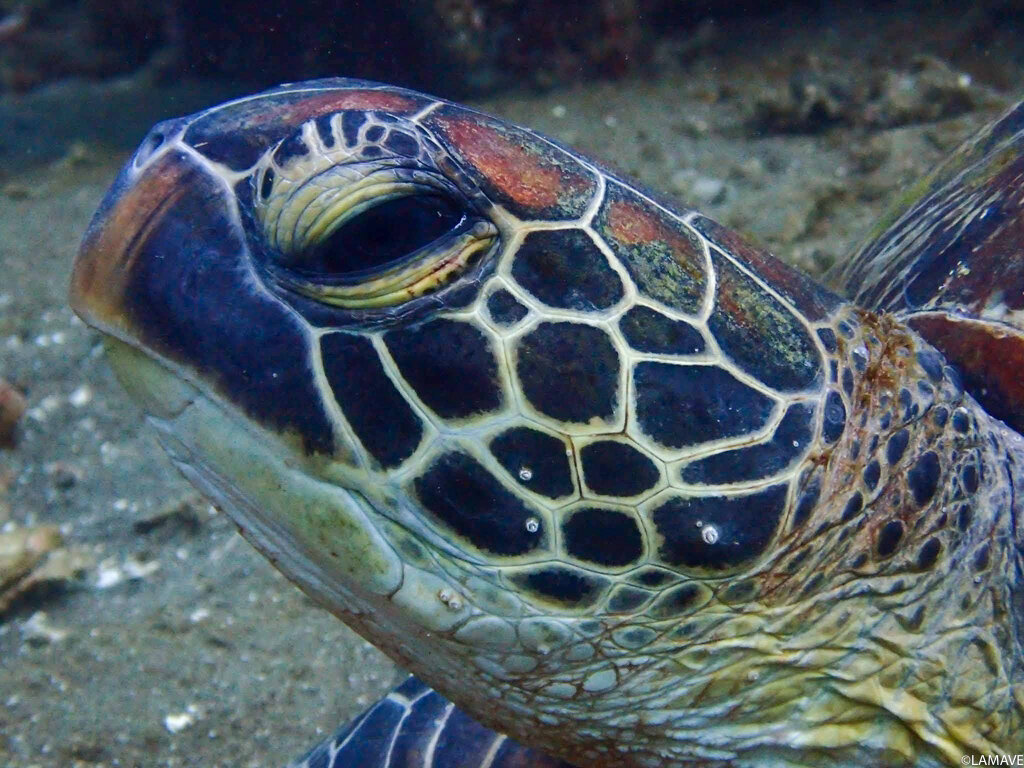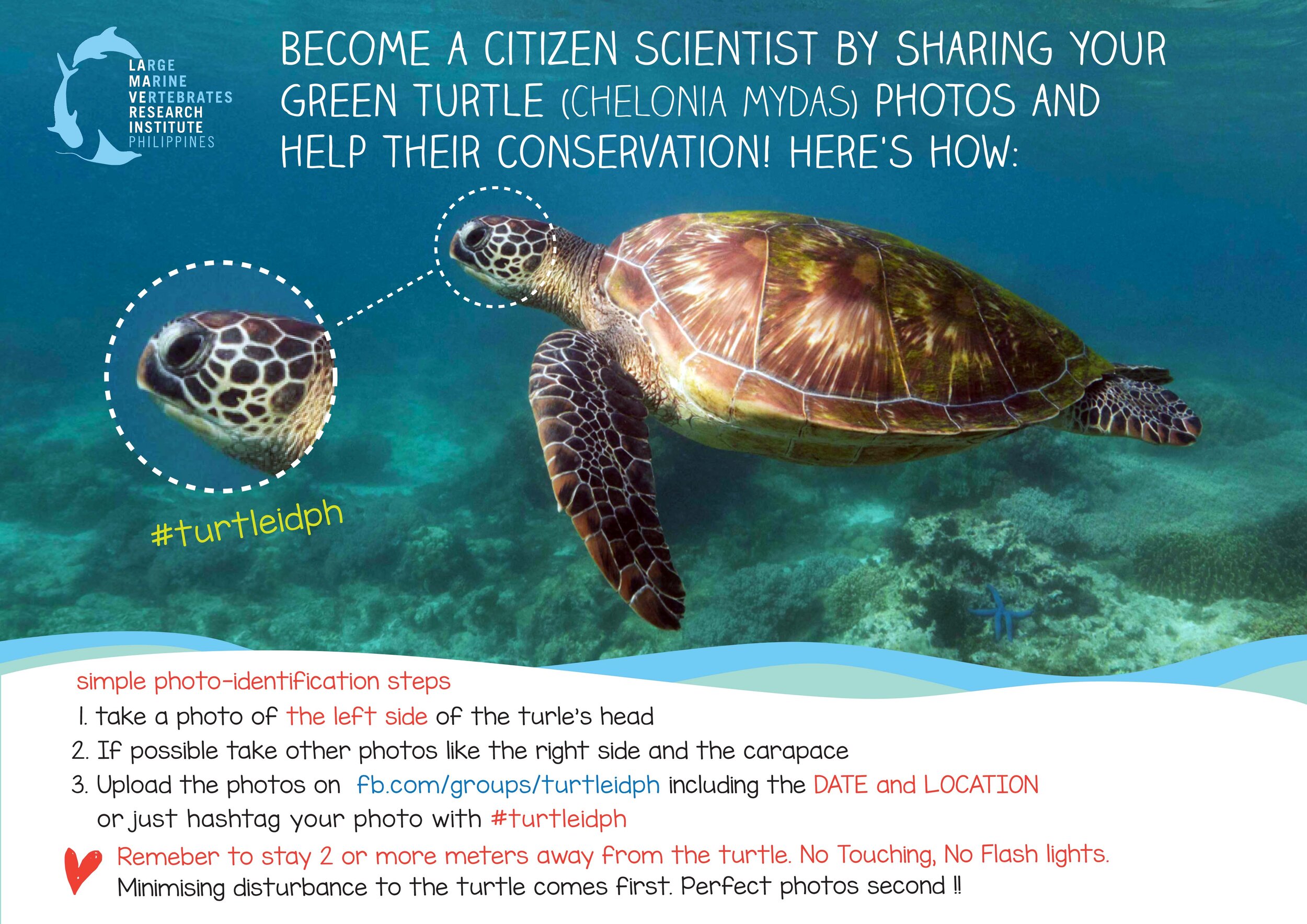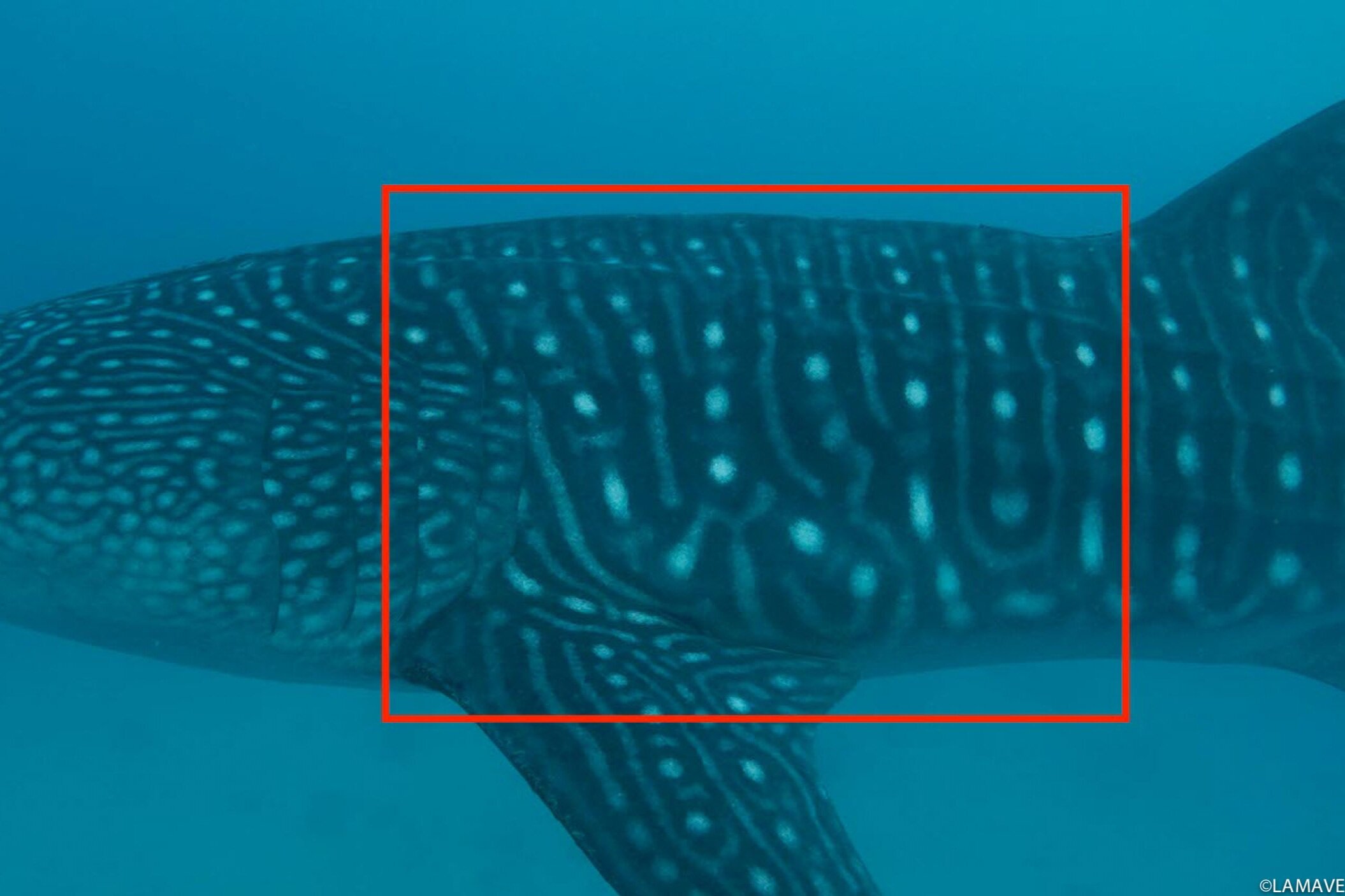What is Citizen Science?
#CitizenScience is the collection and analysis of data relating to the natural world by members of the general public, typically as part of a collaborative project with professional scientists.
For example, it can be used to engage tourists and residents of a research site to submit photographs of individual animals to a website, a mobile app, or to a researcher. This offers the potential of amassing a large amount of data at minimal cost, especially for ecotourism-targeted species.
How is citizen science helping LAMAVE study marine megafauna?
LAMAVE is using citizen science to gather research data for marine species, such as marine turtles, whale sharks and manta rays. We do this through the collection of photographs of these species.
These species have unique patterns on their body that enable us to identify individual animals using a method called photo-identification. Photographs submitted by the public are analysed by our team and newly identified individuals are added to the national population database for the species.
Your photographs enable us to gather a large amount of data from several sites, more than we could do with dedicated research alone. Your photographs help:
monitor individual animals;
amass data for each;
understand habitat use in both space and time.
This process of pattern matching can also track animal movements. Photographs of the same animal in two or more geographically distinct locations reveal to us that it is moving between these sites. Recently with the help of the public, our team tracked a whale shark moving between the Philippines and Malaysia.
Turtles
Do you have photos of marine turtles in the Philippines? Share your photos and contribute to turtle conservation
Marine turtles can be identified based on their uniquely-patterned facial scutes.
How to take the best photographs for research
Prioritise photographing the left side of the turtle’s head
If possible take other photographs of the right side of the head and the carapace (the shell)
Once back on land, email your photographs to turtle[at]lamave.org and include the date and location you saw the turtle.
The best citizen scientist prioritises minimising their impact
A citizen scientist always observes proper interaction guidelines when snorkelling or diving with turtles.
When taking photographs always remember to turn off your flash and maintain a minimum distance of at least 2 meters (one body length with fins). Never touch a turtle or crowd it in any way.
Whale Sharks
Send us your whale shark photographs and contribute to conservation efforts on the species
Whale sharks are identified by their unique spot pattern.
Capturing the best photographs
Prioritise photographing the left side of the body as this is the universal side for identification;
If you get the chance photograph the right side of the body and any distinguishing features like scars, propeller cuts or missing appendages;
Once back on land, upload your photographs to WildBook for Whale Sharks - the online global library for whale sharks.
Minimising your impact is top priority
When taking photographs always remember to turn off your flash and stay at least 3 meters. Never touch a whale shark or harass it in any way.
Be a responsible citizen scientist and always observe proper interaction guidelines when snorkelling with whale sharks and/or if you encounter a whale shark on a dive.
Manta Rays
Send us your manta ray photographs and contribute to their conservation
Manta Rays are identified by the unique spot pattern on their underbelly.
How to take the best photographs
Prioritise photographing the underbelly of the manta ray as this is the area used for identification;
If you get the chance photograph any distinguishing features like scars or bite marks.
Once back on land, email your photographs to manta[at]lamave.org and include the date and location you saw the manta ray.
Observe proper interaction guidelines when snorkelling and/or diving with manta rays
Minimising your impact is top priority. Turn off your flash and stay at least 5 meters away when taking a photograph. Never touch a manta ray and do not crowd around it.








Citizen Scientists Help Identify 1,272 Marine Turtles in the Philippines
Divers and snorkelers have helped identify 1,272 endangered Green (Chelonia mydas) and Hawksbill Turtles (Eretmochelys imbricata) across the Philippines, simply by sharing their photographs. By doing so they’ve become what is known as citizen scientists.